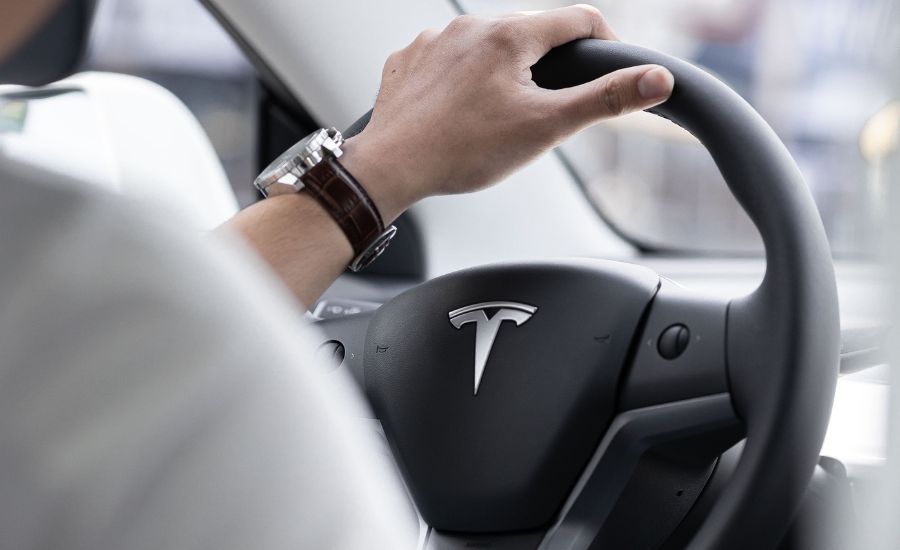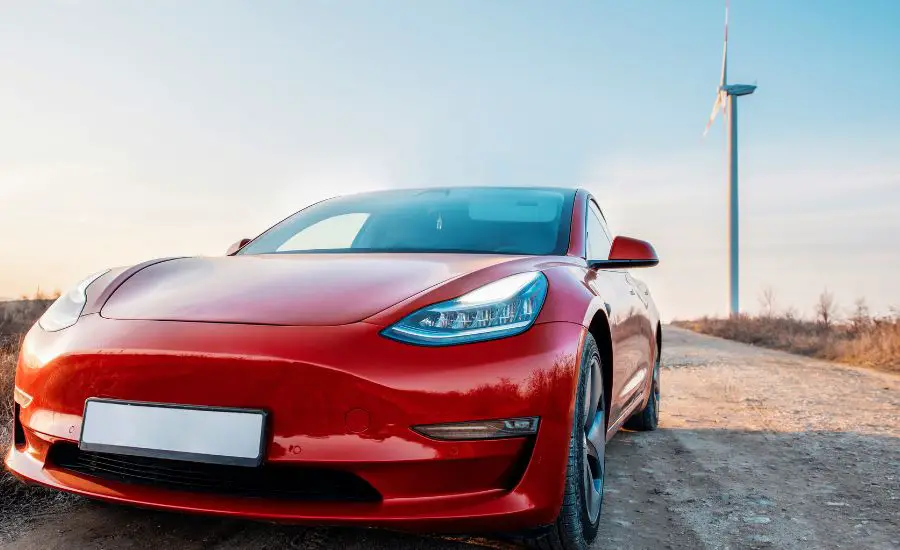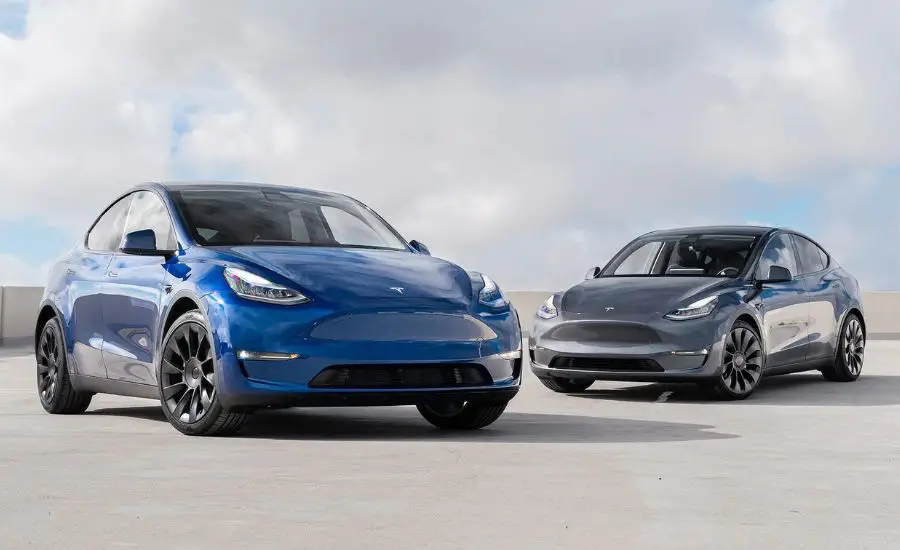The significance of Tesla electric cars’ Creep mode, Hold mode, and Roll mode cannot be overstated by most drivers of vehicle safety.
Regenerative braking, converting kinetic energy into electrical energy, is a critical aspect of driving, and any improvements in this area directly impact the safety of drivers, passengers, and pedestrians.

Contents
Capabilities of Tesla’s stopping mode
Key features of Tesla stopping mode include:
- Emergency braking. Tesla’s stopping mode excels in emergency braking situations. It can detect potential collisions, whether with other vehicles, pedestrians, or objects and initiate rapid deceleration to minimize the impact or avoid the collision altogether.
The system can apply the brakes with enhanced force, significantly reducing the stopping distance. - Adaptive braking. Tesla’s stop mode continuously adapts to changing road conditions and driving situations. It adjusts the braking force and response based on factors such as vehicle speed, traction, and the environment.
This adaptive capability ensures optimal braking performance across a wide range of scenarios. It enhances both safety and driving comfort on high and slow speeds, with summer and winter tires by Tesla Accessories on snowy or icy conditions, and reduces brake wear. - Red light and stop sign recognition. Tesla’s stop mode includes advanced visual recognition capabilities that can identify red lights and stop signs. The system can alert the driver of upcoming intersections and assist in applying the brakes if necessary, promoting compliance with traffic regulations and enhancing safety at intersections.
The brake lights function in the same way as they do in normal driving conditions. The purpose of the brake lights remains unchanged in stopping mode — to provide a clear visual signal to vehicles following behind that the Tesla vehicle is slowing down or stopping.

Tesla’s creep mode, hold, and roll modes
Tesla’s creep mode, hold and roll modes are three stopping modes that affect how the vehicle behaves when the accelerator pedal is released.
Creep mode
Creep mode is an optional driving mode. Creep mode mimics the behavior of automatic transmission in traditional internal combustion engine vehicles.
When Creep mode is enabled, the Tesla vehicle will slowly move forward or backward when the driver’s foot is off the accelerator pedal in Drive mode, similar to the creeping motion of a conventional automatic transmission vehicle.
Creep mode can provide a more familiar driving experience for those accustomed to a traditional automatic transmission.
Creep mode is particularly useful in slow-moving traffic or when maneuvering in parking lots or tight spaces. Creep mode eliminates the need to switch between the accelerator and brake pedals repeatedly to inch forward or backward.
However, it’s important to note that not all Tesla vehicles have Creep mode, as Creep mode varies based on model and software version.
Roll mode
Roll mode is an alternative to Creep mode and is available in certain models.
When Roll mode is enabled, the vehicle remains stationary when the driver’s foot is off the accelerator pedal, even on inclines or uneven surfaces.
Roll mode is different from Creep mode as Roll mode keeps the vehicle completely still when the accelerator pedal is released.
Hold mode
Hold mode is an advanced driving feature available in select Tesla models for one-pedal driving.
When enabled, Hold mode allows the vehicle to remain stationary without the need for the driver to continuously press the brake pedal in Drive mode during one-pedal driving.
Hold mode is particularly useful in traffic, at speeds lower than 5-6mph, or during a complete stop, as Hold mode reduces driver fatigue and enhances convenience.
Hold mode is also convenient for those who are used to one-pedal driving.

The benefits of Tesla’s stopping modes
Tesla’s stopping mode offers a range of significant benefits.
Improved braking performance and responsiveness
One of the primary benefits of Tesla’s stopping mode is the significant improvement in braking performance and responsiveness.
By leveraging advanced technology and algorithms, the system reduces brake wear and brake pads wear, and optimizes the braking force and timing, allowing Tesla vehicles to come to a stop more efficiently.
This enhanced braking capability translates into a shorter stopping distance, giving drivers more control and confidence in their ability to halt the vehicle quickly when needed.
The improved responsiveness of the braking system contributes to a safer driving experience and reduces the risk of accidents caused by delayed or ineffective braking.

Enhanced safety for drivers, passengers, and pedestrians
Tesla’s stopping mode prioritizes safety for everyone involved in the driving experience, including the vehicle occupants and pedestrians.
The system’s ability to detect potential collisions, anticipate emergencies, and intervene with rapid deceleration to a complete stop significantly reduces the risk of accidents.
This technology can provide crucial assistance to drivers in critical moments, helping them avoid or mitigate collisions and potential injuries.

Reduction in accidents and collisions
The implementation of Tesla’s stopping mode holds great potential for reducing the frequency and severity of accidents and collisions. The system’s advanced sensors and intelligent algorithms continuously monitor the surroundings, providing an extra layer of awareness and responsiveness.
By identifying and responding to potential hazards and collision risks in real-time, the system can initiate emergency braking faster and more accurately than human reflexes alone.
This proactive approach to accident prevention can play a crucial role in minimizing the number of accidents and their associated consequences, ultimately making roads safer for everyone.

Conclusion
Tesla’s three stopping modes represent a groundbreaking advancement in vehicle safety, offering a host of benefits that enhance braking performance, improve safety for Tesla owners and pedestrians, reduce accidents, and potentially impact insurance premiums and liability considerations.
FAQ
Here are answers to commonly asked questions regarding electric vehicles’ stopping mode.
What is Tesla stopping mode?
Tesla stopping mode is an advanced safety feature that optimizes the braking performance of Tesla vehicles.
It utilizes advanced technology, such as regenerative braking (converting kinetic energy into electrical energy).
Stopping mode enables Tesla vehicles to decelerate rapidly and accurately, reducing the risk of accidents and collisions.
Do all Teslas have creep mode?
No, not all Teslas have creep mode. Creep mode is available in some Tesla models, such as the Model S and Model X. But Creep mode is not a standard feature across all Tesla vehicles.
Can you turn off Tesla regenerative braking?
Regenerative braking slows down the vehicle. Although it is not possible to completely turn off regenerative braking in Tesla vehicles, drivers can adjust the regenerative braking strength using the settings in the vehicle’s touchscreen display.
The options for regenerative braking typically include “Standard,” “Low,” or “Lowest” regenerative braking settings, allowing drivers to choose the level of coasting or braking force that suits their preferences regarding regenerative braking.
Does Model S have stopping mode?
Yes, Tesla Model S does. Stopping mode is a safety feature available in various Tesla models, including the Tesla Model S.
What is Tesla’s power meter?
Power Meter is a feature available in Tesla vehicles that provides real-time information on power usage and distribution within the vehicle’s electrical system.
What is Tesla’s regenerative braking?
Tesla’s regenerative braking is an innovative feature that harnesses the kinetic energy generated during deceleration or braking and converts it into electrical energy to recharge the vehicle’s battery.
Regenerative braking is designed to enhance energy efficiency and extend the driving range of Tesla electric vehicles.
When the driver releases the accelerator pedal or applies the brake, the regenerative braking system engages.
How does the brake pedal work in a Tesla vehicle?
The brake pedal in a Tesla vehicle operates similarly to the brake pedal in traditional gas-powered vehicles.
When you press the brake pedal, it sends a signal to the vehicle’s braking system. The brake pedal initiates the process of slowing down or stopping the vehicle.



